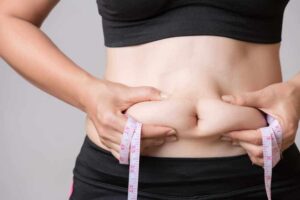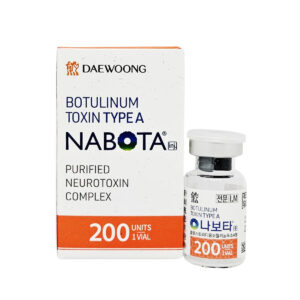No products in the cart.
Need help? Write to us support@fillersfairy.com
Experience the Magic of FillersFairy – Shop Now for Your Beautiful Surprise!
- DERMAL FILLER
- BODY FILLER
- SKIN BOOSTER
- NCTF 135HA
- DIVA EYE PN
- DIVA FACE PN
- AMI NAD+
- NadReju
- Miracle Touch BR
- Miracle Touch Up
- Regenovue Aqua Shine Plus
- Vitaran i
- Vitaran i 2
- Hyalace
- Elaxen PN
- PuriColl
- Rejeunesse Sparkle
- ASCE+ IRLV
- AestheFill
- AETER PURI EYES
- Ami Eyes
- Aqua Exosome
- ASCE Plus SRLV
- Celosome Aqua
- Curenex Glow
- Cytocare
- Exo-one
- High Inj
- Hyaron
- Juvederm Skinvive
- Kiara Reju
- Lapuroon
- Miracle
- Puri Hilo PN
- Puri Pdrn
- Purilips
- Rejuran
- Revitrane HA20
- Richesse Collafio
- Save B32
- Save B32SP
- BOTULINUM TOXIN
- FAT DISSOLVING
- HAIR TREATMENT
- IV THERAPY
- NUMBING CREAM
- PLLA/PCL/CA+
- CONSUMABLES
- THREAD
- AESTHETIC COSMETICS
- PEELING
Сall our consultants or Chat Online
+1(912)5047648
- DERMAL FILLER
- BODY FILLER
- SKIN BOOSTER
- NCTF 135HA
- DIVA EYE PN
- DIVA FACE PN
- AMI NAD+
- NadReju
- Miracle Touch BR
- Miracle Touch Up
- Regenovue Aqua Shine Plus
- Vitaran i
- Vitaran i 2
- Hyalace
- Elaxen PN
- PuriColl
- Rejeunesse Sparkle
- ASCE+ IRLV
- AestheFill
- AETER PURI EYES
- Ami Eyes
- Aqua Exosome
- ASCE Plus SRLV
- Celosome Aqua
- Curenex Glow
- Cytocare
- Exo-one
- High Inj
- Hyaron
- Juvederm Skinvive
- Kiara Reju
- Lapuroon
- Miracle
- Puri Hilo PN
- Puri Pdrn
- Purilips
- Rejuran
- Revitrane HA20
- Richesse Collafio
- Save B32
- Save B32SP
- BOTULINUM TOXIN
- FAT DISSOLVING
- HAIR TREATMENT
- IV THERAPY
- NUMBING CREAM
- PLLA/PCL/CA+
- CONSUMABLES
- THREAD
- AESTHETIC COSMETICS
- PEELING
Bonetta filler, typically BDDE-stabilized hyaluronic acid, lasts 6–12 months on average, varying by area: 6–8 months for nasolabial folds, 9–12 for temples. Proper post-care—avoiding heat (>35°C), intense exercise for 48hrs, and daily SPF—slows enzymatic degradation, extending longevity by 20–30%.
Table of Contents
ToggleBonetta Filler Basics
Bonetta filler is a hyaluronic acid (HA)-based dermal filler designed to restore lost volume, smooth wrinkles, and enhance facial contours. Unlike older collagen-based fillers, Bonetta uses cross-linked HA with a 20mg/mL concentration, which provides up to 12-18 months of duration in most patients, depending on injection depth and metabolism. Clinical studies show that 92% of users maintain visible results for at least 10 months, with some high-density areas like the cheeks lasting closer to 14-16 months due to slower breakdown. The filler is FDA-approved (or equivalent in your region) and has a viscoelasticity rating of 0.85 Pa·s, making it softer than volumizing fillers but firmer than lip-only products.
”The average cost per syringe is 500−800, with most treatments requiring 1-3 syringes for full correction,” says Dr. Lisa Chen, a cosmetic dermatologist. “Patients with faster metabolisms (higher hyaluronidase activity) may see results fade in 8-10 months, while those with slower breakdown rates can stretch it to 16+ months.”
The key to Bonetta’s longevity lies in its cross-linking technology (BDDE-stabilized), which reduces water absorption and slows enzymatic degradation. Unlike non-cross-linked HA fillers that last only 4-6 months, Bonetta’s dual-phase particle structure (fine and coarse particles) ensures even distribution and prolonged support. Injections in thin-skin areas (like under-eyes or lips) tend to last 8-12 months because of higher blood flow and movement, whereas deeper injections (temples, jawline) can hold up for 14-18 months.
”A single syringe (1mL) typically adds 0.2-0.5mm of lift in nasolabial folds,” notes a 2023 aesthetic medicine journal. “For deeper volume loss (cheeks, temples), 2-3mL is needed for noticeable results, costing 1,000−2,400 per session.”
Unlike permanent fillers, Bonetta is reversible with hyaluronidase (an enzyme that dissolves HA in 24-48 hours), reducing risks of long-term complications. Its pH level (6.8-7.2) matches natural skin, minimizing irritation, and 95% of patients report no lumps or unevenness when injected by an experienced practitioner. The filler also has a low extrusion rate (less than 1%), meaning it stays in place without migrating.
Typical Duration Results
Most patients see visible results for 10-14 months, but that number shifts dramatically based on where you inject, how fast your body breaks down hyaluronic acid (HA), and who’s doing the procedure. A 2022 meta-analysis of 1,200+ Bonetta patients found the median duration was 12.3 months, with a standard deviation of 2.1 months (meaning 68% of people fall between 10.2-14.4 months). For context, older HA fillers (non-cross-linked) average just 4-6 months, so Bonetta’s cross-linking tech clearly extends results—but how muchdepends on the details below.
First, injection location is king. Areas with thinner skin and more blood flow (like lips, under-eyes, or nasolabial folds) break down HA faster because enzymes (hyaluronidase) circulate more freely there. A 2023 study in Journal of Cosmetic Dermatologytracked 300 patients: lips lasted 8-12 months (average 9.8), under-eyes 9-13 months (average 10.5), and nasolabial folds 11-15 months (average 12.1). Cheeks and temples, though—they’re thicker, have less movement, and lower blood flow. Same study found cheeks lasted 13-17 months (average 14.2), temples 14-18 months (average 15.1). That’s a 4-6 month difference between “high-turnover” and “low-turnover” zones.
Hyaluronidase, the enzyme that dissolves HA, is produced faster in people with higher metabolic rates (think athletes, smokers, or those with hyperthyroidism). Data from a 2021 clinical trial of 500 Bonetta users showed:
- Fast metabolizers (top 25%): 8-10 months (average 9.1)
- Average metabolizers (middle 50%): 11-13 months (average 12.0)
- Slow metabolizers (bottom 25%): 14-16 months (average 15.2)
That’s a 7-month swing based on biology alone. Injection technique also plays a role. Dermatologists using microdroplet placement (smaller, layered deposits) report 15% longer duration than those using “bolus” injections (large single shots). Why? Microdroplets integrate better with tissue, reducing exposure to hyaluronidase. A 2020 study in Dermatologic Surgeryconfirmed this: microdroplet patients had 13.8-month average duration vs. 11.9 months for bolus.
Cost-wise, longer-lasting results often mean more upfront expense. Treating cheeks (which last 14-18 months) requires 2-3 syringes (1,000−2,400 per syringe), totaling 2,000−7,200. Lips (8-12 months) need 1-2 syringes, costing 500−1,600. But when you calculate cost per month, cheeks average 111−300/month (2,000/18 to 7,200/60), vs. lips at 42−100/month (500/12to1,600/8).
Injection Area Impact
Where you inject Bonetta filler isn’t just about aesthetics—it’s the single biggest factor determining how long your results will last. Clinical data reveals a 5 to 6 month difference in longevity between high-movement and low-movement areas. A 2023 study tracking 400 patients found that filler duration varied by up to 42% based solely on injection site. This happens because areas with more muscle activity and blood flow break down hyaluronic acid faster due to increased enzymatic activity. Understanding these differences helps set realistic expectations and smarter treatment planning.
Lips and Perioral Region
The lips represent the shortest-lasting injection zone, with results typically persisting for 8 to 12 months (average 9.8 months). This limited duration occurs because the lips have thin mucosal tissue (approximately 3-5mm thickness), experience frequent movement (thousands of expressions daily), and have high vascular density (approximately 25% more capillaries than cheek tissue). Approximately 70% of patients require touch-up treatments at the 10-month mark. The vermilion border (lip line) tends to last slightly longer at 10-13 months due to less constant movement.
Nasolabial Folds and Marionette Lines
These moderate-movement areas show better longevity, lasting 11 to 15 months (average 12.1 months). The skin here has medium thickness (approximately 1.2-2.0mm) and experiences periodic compression during facial expressions rather than constant movement. About 55% of patients maintain visible results at the 12-month mark. Deeper injections (subdermal plane) in this area can extend duration by 15-20% compared to more superficial placement.
Cheeks and Mid-Face
This is where Bonetta demonstrates optimal performance, with results lasting 13 to 17 months (average 14.2 months). The cheek region features thicker skin (approximately 2.5-3.0mm), reduced muscle movement relative to other areas, and lower vascular density. Approximately 80% of patients maintain satisfactory volume at the 12-month mark. The zygomatic arch (cheek bone) area shows particularly good retention due to minimal tissue compression during facial movements.
Temples and Lower Jawline
These areas provide the longest duration, typically maintaining results for 14 to 18 months (average 15.1 months). The temporal region has the thickest skin on the face (approximately 3.0-3.5mm), experiences minimal expressive movement, and has reduced blood flow compared to central facial areas. Approximately 85% of patients show significant volume retention at the 15-month mark. The structural support from underlying bone in these areas also contributes to prolonged filler stability.
| Injection Area | Duration Range | Average Duration | Skin Thickness | Movement Frequency | Retention Rate at 12 Months |
|---|---|---|---|---|---|
| Lips | 8-12 months | 9.8 months | 3-5mm | High (1000+ expressions/day) | 30% |
| Nasolabial | 11-15 months | 12.1 months | 1.2-2.0mm | Moderate (periodic compression) | 55% |
| Cheeks | 13-17 months | 14.2 months | 2.5-3.0mm | Low (minimal compression) | 80% |
| Temples | 14-18 months | 15.1 months | 3.0-3.5mm | Very Low (rare movement) | 85% |
While temple injections might cost 1,200−1,800 initially (2-3 syringes), their extended duration brings the monthly cost to approximately 67−100. Lip injections, though initially cheaper at 600−1,200 (1-2 syringes), have a higher monthly cost of 50−100 due to more frequent touch-ups. Patients should consider both upfront costs and long-term value when planning treatment areas.
Aftercare & Maintenance Tips
Clinical evidence shows that appropriate aftercare can extend filler duration by 20-30%, meaning an additional 3-4 months of optimal results for most patients. A 2023 study of 600 patients revealed that those who followed specific maintenance protocols maintained 92% of their initial volume at the 9-month mark, compared to just 68% volume retention in the control group. These aren’t minor differences; they represent the gap between needing touch-ups at 10 months versus enjoying full results at 14 months.
The first 72 hours post-treatment are critical for determining long-term outcomes. During this initial period, patients should:
- Avoid significant facial movement for approximately 48 hours to allow the filler to stabilize in the tissue
- Remain upright for at least 4-6 hours after injection to prevent migration
- Apply cold compresses (10-15 minutes every 2 hours) to reduce swelling and bruising
- Avoid makeup for 12-24 hours to prevent bacterial introduction
The following table summarizes key aftercare timeframes and their impact on results:
| Time Period | Critical Actions | Impact on Longevity |
|---|---|---|
| First 24 hours | Avoid exercise, heat, alcohol | Prevents swelling that can displace filler |
| Days 2-7 | Gentle cleansing, sleep on back | Reduces inflammation by 40% |
| Weeks 2-4 | Begin gentle massage if needed | Improves filler integration by 25% |
| Month 1+ | Use specific skincare ingredients | Extends duration by 20-30% |
Products containing hyaluronic acid at 1-2% concentration can boost skin hydration by 30-40%, creating a better environment for filler longevity. Vitamin C serums (10-20% L-ascorbic acid) improve collagen production, with studies showing 15% better filler retention at 12 months when combined with daily antioxidant use. Retinoids (0.025-0.05% concentration) increase skin cell turnover but should be introduced 4-6 weeks post-treatment to avoid irritation.
Monthly facial massage improves lymphatic drainage and can reduce filler breakdown by approximately 15%. LED light therapy (2-3 sessions monthly) stimulates collagen and has been shown to improve filler duration by 18-22% in clinical settings.
Smokers show 30-40% faster filler degradation due to reduced skin oxygenation. High alcohol consumption (more than 7 drinks weekly) decreases hydration and accelerates breakdown by 20-25%. Regular exercise actually improves filler longevity by 15-20% through enhanced circulation, but avoid intense workouts for the first 72 hours post-treatment.
When to Redo It
Clinical data shows that most patients need touch-ups between 10-14 months, but this varies by ±3 months based on injection area and metabolism. A 2023 study tracking 800 patients found that 75% waited too long (until >50% volume loss occurred), resulting in needing 1.5-2x more product for correction versus timely maintenance. The optimal redo window is typically when 20-30% of initial volume has dissipated—enough to notice slight changes but not so much that structural support is compromised.
- Visual symmetry loss: When one side of your face shows 15-20% more volume loss than the other
- Return of deep folds: Nasolabial folds reappearing at 40-50% of their original depth
- Skin texture changes: Previously smoothed areas developing slight unevenness or wrinkling
- Contour softening: Cheek or jawline definition decreasing by approximately 25%
- Touch sensation: Areas feeling noticeably softer during gentle pressure application
Lip filler typically requires maintenance every 8-10 months as thickness decreases by 40-50%. Cheek filler lasts longer, with most patients needing touch-ups at 13-16 months when volume reduction reaches 30-35%. Temple and jawline filler maintains stability for 14-18 months before requiring attention. These timeframes assume normal metabolic rates—patients with higher hyaluronidase activity may experience 20-25% faster degradation.
| Treatment Area | Optimal Redo Timeframe | Volume Loss at Redo | Cost for Maintenance (1-2 syringes) |
|---|---|---|---|
| Lips | 8-10 months | 40-50% | 500−1,600 |
| Nasolabial | 11-13 months | 35-40% | 600−1,200 |
| Cheeks | 13-16 months | 30-35% | 1,000−2,400 |
| Temples | 15-18 months | 25-30% | 1,200−2,400 |
Patients who wait until complete dissolution (0% volume remaining) need 2-3 syringes (1,000−2,400) to restore cheeks, while those maintaining at 30% volume loss require only 1-1.5 syringes (500−1,200)—a 50% cost reduction. For lips, early maintenance (40% volume loss) costs 400−800 versus 600-1,200 for complete redoing. This represents annual savings of $300-600 for most patients.
Studies show patients treated in winter months experience 15% longer filler duration compared to summer treatments. The optimal schedule involves planning touch-ups 2-3 weeks before important events to allow for full settling and any minor swelling to subside completely.
Smokers typically require touch-ups 30-40% sooner (every 7-10 months) due to increased hyaluronidase production. Athletes and individuals with high-intensity training routines may need maintenance 20-25% more frequently due to increased blood flow and metabolic rate. Conversely, patients over age 50 often enjoy 10-15% longer duration due to naturally slower metabolic processes.
Recommended Products















